Related Research Articles

Esperanto is the most widely spoken constructed international auxiliary language. It was created by Polish ophthalmologist L. L. Zamenhof in 1887. Zamenhof first described the language in The International Language, which he published in five languages under the pseudonym "Doktoro Esperanto". The word esperanto translates into English as "one who hopes".
English usually refers to:
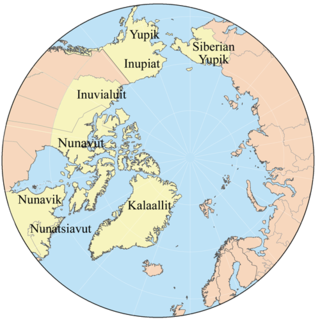
Eskimo or Eskimos are the indigenous circumpolar peoples who have traditionally inhabited the northern circumpolar region from eastern Siberia (Russia) to Alaska, Northern Canada, Nunavik, Nunatsiavut, and Greenland.

The Germanic peoples are a category of north European ethnic groups, first mentioned by Graeco-Roman authors. They are also associated with Germanic languages, which originated and dispersed among them, and are one of several criteria used to define Germanic ethnicity.

Hindi, or more precisely Modern Standard Hindi, is an Indo-Aryan language spoken chiefly in India. Hindi has been described as a standardised and Sanskritised register of the Hindustani language, which itself is based primarily on the Khariboli dialect of Delhi and neighbouring areas of Northern India. Hindi, written in the Devanagari script, is one of the two official languages of the Government of India, along with the English language. It is an official language in 9 States and 3 Union Territories and an additional official language in 3 other States. Hindi is also one of the 22 scheduled languages of the Republic of India.

Korean is an East Asian language spoken by about 77 million people. It is the official and national language of both Koreas: North Korea and South Korea, with different standardized official forms used in each country. It is a recognised minority language in the Yanbian Korean Autonomous Prefecture and Changbai Korean Autonomous County of Jilin province, China. It is also spoken in parts of Sakhalin, Russia, and Central Asia.

Pakistan's estimated population in 2017 was 207,774,520 according to the 2017 Census of Pakistan. Pakistan is the world's fifth-most-populous country. However, as per recent 2020 statistics, the current population of Pakistan is 222,903,998 with the growth rate of 2.0%.
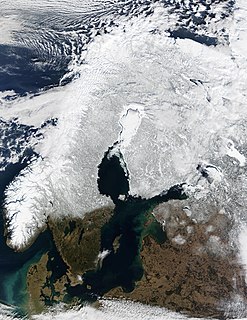
Scandinavia is a subregion in Northern Europe, with strong historical, cultural, and linguistic ties. The term Scandinavia in local usage covers the three kingdoms of Denmark, Norway, and Sweden. The majority national languages of these three belong to the Scandinavian dialect continuum, and are mutually intelligible North Germanic languages.

Spanish or Castilian is a Romance language that originated in the Iberian Peninsula of Europe; today, it is a global language with nearly 500 million native speakers, mainly in Spain and the Americas. It is the world's second-most spoken native language, after Mandarin Chinese, and the world's fourth-most spoken language, after English, Mandarin Chinese and Hindi.
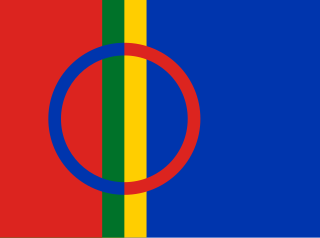
The Sámi people are an indigenous Finno-Ugric people inhabiting Sápmi, which today encompasses large northern parts of Norway, Sweden, Finland and the Kola Peninsula within the Murmansk Oblast of Russia. The Sámi have historically been known in English as Lapps or Laplanders, but these terms are regarded as offensive by some Sámi people, who prefer the area's name in their own language, "Sápmi". Sámi ancestral lands are in the Volga region, in present-day Russia, like other Uralic peoples. Their traditional languages are the Sámi languages, which are classified as a branch of the Uralic language family.

Welsh is a Brittonic language of the Celtic language family. It is spoken natively in Wales, by some in England, and in Y Wladfa. Historically, it has also been known in English as "British", "Cambrian", "Cambric" and "Cymric".

The Aryan race is a historical race concept which emerged in the late 19th century to describe people of Indo-European heritage as a racial grouping.

The Turkic peoples are a collection of ethnic groups of Central, East, North and West Asia as well as parts of Europe and North Africa, who speak Turkic languages.

The Indo-Aryan or Indic languages form a major language family of South Asia. They constitute a branch of the Indo-Iranian languages, themselves a branch of the Indo-European language family. As of the early 21st century more than 800 million people speak Indo-Aryan languages, primarily in India, Bangladesh, Nepal, Pakistan and Sri Lanka. Moreover, large immigrant and expatriate Indo-Aryan-speaking communities live in Northwestern Europe, Western Asia, North America, Southeast Africa and Australia. There are well over 200 known Indo-Aryan languages.
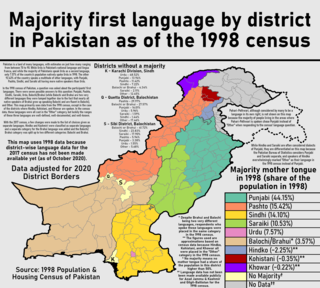
Pakistan is home to many dozens of languages spoken as first languages. Five languages have more than 10 million speakers each in Pakistan – Punjabi, Pashto, Sindhi, Saraiki and Urdu. Almost all of Pakistan's languages belong to the Indo-Iranian group of the Indo-European language family.

Multilingualism is the use of more than one language, either by an individual speaker or by a group of speakers. It is believed that multilingual speakers outnumber monolingual speakers in the world's population. More than half of all Europeans claim to speak at least one language other than their mother tongue; but many read and write in one language. Always useful to traders, multilingualism is advantageous for people wanting to participate in globalization and cultural openness. Owing to the ease of access to information facilitated by the Internet, individuals' exposure to multiple languages is becoming increasingly possible. People who speak several languages are also called polyglots.
Rajasthani refers to a group of Indo-Aryan languages and dialects spoken primarily in the state of Rajasthan and adjacent areas of Haryana, Punjab, Gujarat, and Madhya Pradesh in India. There are also speakers in the Pakistani provinces of Sindh and Punjab. Rajasthani is a language distinct from the neighbouring, related Hindi languages by being a western Indo-Aryan language.

The indigenous peoples of the Americas are the pre-Columbian peoples of North, Central and South America and their descendants.

Latin script, also known as Roman script, is a set of graphic signs (script) based on the letters of the classical Latin alphabet. This is derived from a form of the Cumaean Greek version of the Greek alphabet used by the Etruscans. Several Latin-script alphabets exist, which differ in graphemes, collation and phonetic values from the classical Latin alphabet.
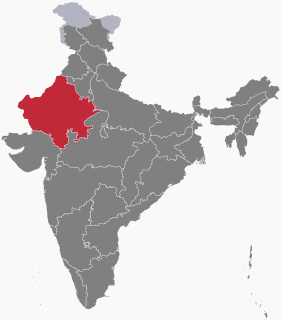
The following outline is provided as an overview of and topical guide to Rajasthan:
References
- ↑ Goaria at Ethnologue (18th ed., 2015)
- ↑ Hammarström, Harald; Forkel, Robert; Haspelmath, Martin, eds. (2017). "Goaria". Glottolog 3.0 . Jena, Germany: Max Planck Institute for the Science of Human History.
| This article about Indo-Aryan languages is a stub. You can help Wikipedia by expanding it. |